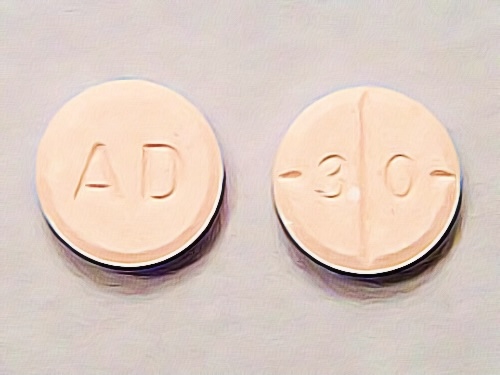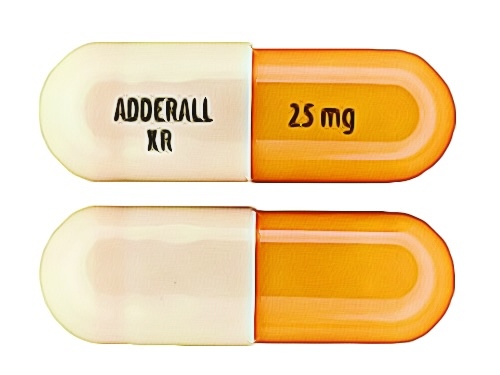Adderall dependence is more prevalent than you may think, and sadly, it can even hit even those who take it responsibly as prescribed by the doctor.
When a person depends on Adderall, they may experience uncomfortable and challenging symptoms that come with withdrawal. These symptoms can go on for a few days or as long as several weeks, depending on the severity of their dependence. When one goes through withdrawal, they may also experience some lingering psychological symptoms and cravings; increasing the need for medical assistance.
Unlike other withdrawal symptoms of other substances, withdrawal isn’t associated with any dangerous medical problems. However, the primary risk that a person may experience is a depressive state that could escalate to problematic behaviors and suicidal thoughts.
In this article, we’ll give you a rundown on everything you need to know about Adderall withdrawal — what you can expect, the symptoms you may experience, and how long withdrawals last. Let’s begin!
Adderall Withdrawal Symptoms
Adderall withdrawal will be different for each person, and their withdrawal experience will depend on various factors, including the nature of their Adderall use. When a person has a stimulant-use disorder or Adderall addiction, the weeks following their last dose can be a tough battle physically, emotionally, and mentally.
When a person is experiencing withdrawal symptoms, their normal functions may be affected. It would also be difficult for them to fulfill their usual responsibilities at work, home, or school. With that being said, Adderall withdrawal symptoms can truly be severe.

To understand the severity of Adderall withdrawal, let’s zoom out and understand what Adderall does in the first place. Adderall’s job is to increase the activity of two neurotransmitters or chemical messengers into our brains. These two neurotransmitters are norepinephrine and dopamine.
Dopamine activates your brain’s reward system, while norepinephrine boosts your alertness, cognitive functions, and focus — all of which play a massive role in mood regulation.
With long-term Adderall use, your brain can get used to the hyperactivity of these neurotransmitters, making you crave the experience and euphoria even more. Basically, when you start to experience Adderall withdrawal, you may feel low levels of dopamine and norepinephrine that could greatly affect your mentality and behavior.
However, what is the difference between feeling said to feel severe depression? Here is what severe depression is and what you may experience:
- Feeling empty and hopeless;
- Loss of interest in activities that typically bring you pleasure or joy;
- Extreme irritability or frustration;
- Lack of energy or excessive tiredness;
- Unhealthy sleeping habits;
- Feeling anxious;
- Feeling like you’re operating slower than usual;
- Feelings of worthlessness;
- Feelings of guilt or regret;
- Unhealthy eating habits;
- Trouble with thinking or focusing;
- Unusual physical pain and aches;
- Thoughts of suicide, death, or suicide attempts;
You may experience these depression symptoms because, during Adderall withdrawal, you have low levels of dopamine and norepinephrine. However, know that depression isn’t the only withdrawal symptom you may experience.
Is Adderall Addictive?
Since Adderall is a stimulant and much more potent than caffeine, some people misuse the drug to get high and feel alert. With that being said, Adderall has highly addictive properties that could affect any person who misuses the drug.
Adderall Abuse
Adderall is a common drug of abuse. This pharmaceutical drug is legally manufactured and prescribed to patients with certain medical conditions, including attention deficit hyperactivity disorder and narcolepsy.


The reason people abuse the drugs is because of what it contains — amphetamine, which is a powerful stimulant. Here are some symptoms that may arise when you have a stimulant disorder:
- Continued use of Adderall even when it’s causing physical and psychological damage
- If they’re taking other people’s prescriptions
- If they use higher doses than what’s prescribed to them
- If they inject, smoke, or snort the pills
- If they like to mix their Adderall medication with other drugs or alcohol
- If they use it to get high or keep up with daily activities
- If they have an intense craving for the drug
- If they can’t quit using the drug even when it’s affecting their job, finances, and personal relationships
- If they’re experiencing physical shifts in their behavior, eating habits, and body functions
Though some people obtain the drug as a result of having specific medical conditions, these people won’t develop a substance disorder, provided they follow their doctor’s orders.
Those who don’t have a medical need for the drug and obtain the medication to abuse them and get high may experience alarming consequences, especially when they go through withdrawal. Adderall abusers will often crush the pills and snort them to deliver the stimulant faster to the brain, giving them an intense euphoric rush that is highly addictive.
How Long Does It Stay In Your System?
When you take Adderall, it is absorbed fully through your gastrointestinal tract and is then broken down by your liver and leaves through the body when you urinate. And though it is eliminated through urine, Adderall can still be detected in different ways, including the following:
- Blood: Adderall can be seen in blood tests up to 46 hours from your last use. It is much quicker to detect the drug with this type of test;
- Urine: Adderall can be detected in urine for 48 to 72 hours from your last use. This could show the concentration of Adderall in your system as well;
- Saliva: One can detect Adderall in saliva 20 to 50 hours from your last dose;
- Hair: Although drug testing using hair is uncommon; you can detect Adderall for up to three months from the last use;
With that being said, several factors can contribute to how long Adderall can stay in your system. Here are the factors you should be aware of:
- Your body’s composition, including your weight, height, and how much fat you have;
- Your metabolism affects how long a drug can stay in your body as it determines how quickly it breaks down and leaves your body;
- The strength of dose you take can also affect how long the drug stays in your system, how it spreads, and how it dissolves;
- Age can also affect how long Adderall can stay in your system, give that your body composition changes as you age;
- Organ functions are also an important factor of how long a drug can stay in your system, especially your liver and kidney functions.
The Bottom Line: It Pays to Know the Effects of Adderall Abuse and the Withdrawal Symptoms One May Experience
Withdrawals are incredibly difficult to deal with; that’s why it’s essential to understand the functions of a certain drug like Adderall and how it can affect a person’s physical functions and behaviors.
Knowing the signs you should look out to spot a person dealing with drug abuse can help you assist them in their road to sobriety. This is why it’s crucial to familiarize yourself with withdrawal symptoms to help them ease the drug out of their system and give them as much support they need.
Sources:
https://medlineplus.gov/druginfo/meds/a601234.html
















